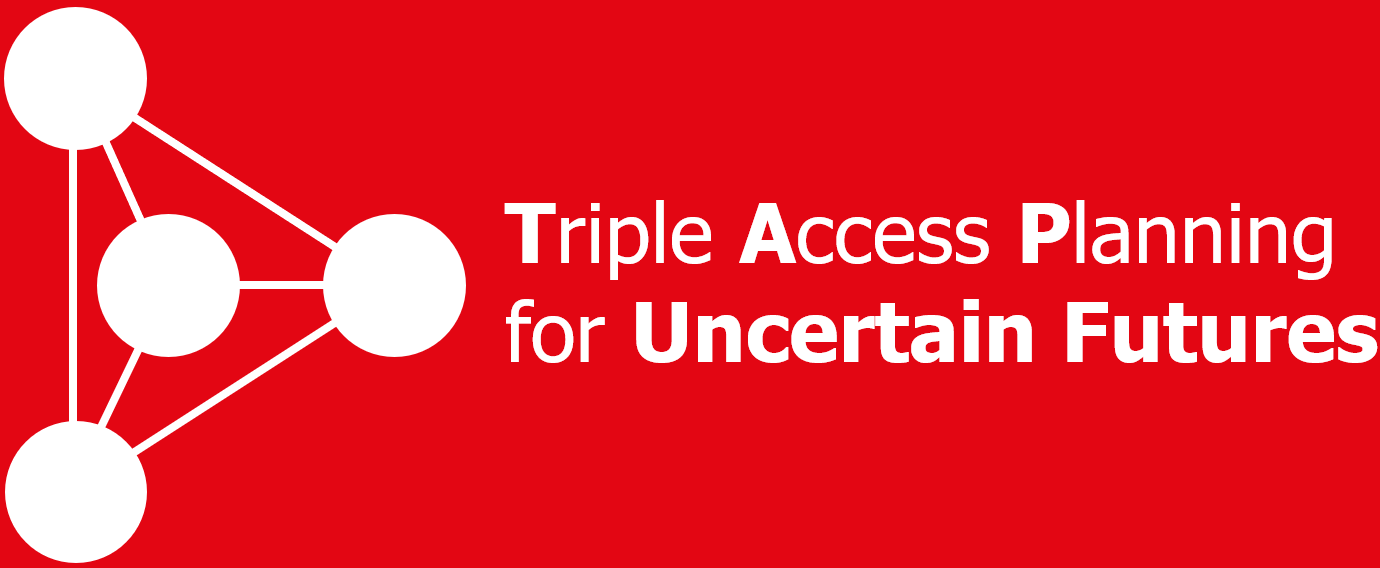A Handbook for Practitioners is available and is located here. As well as the full version of the Handbook, a summary version is available in Dutch, English, French, Italian, Slovenian and Swedish.
To download directly:
Full Handbook (in English)
Summary versions: Dutch | English | French | Italian | Slovenian | Swedish
- Introductory video for Handbook (alternatively see related LinkedIn Post with video) that offers a 15-minute insight into TAP and the contents of the Handbook (a PDF of the slides in the video is also available here)
- Read an essay about TAP and the new Handbook, published by The Planner, called Predict or decide? How ‘triple access planning’ can change placemaking
- Watch a March 2024 recording on YouTube of a panel discussion with practitioners about Triple Access Planning
- Read a published commentary article to accompany the Handbook launch called ‘Triple Access Planning – a diffusing innovation that reflects our new look world’ (and visit TAPAS.network to view this and other transport planning and accessibility commentaries)
The handbook
Planning for the future continues to evolve in the face of a changing world. What we did in the past will not work for the future. Even the recent shift, with greater interest in transport planning being vision-led and focused on people rather than traffic, it is still not enough.
This Handbook is the next evolutionary step. It supports a way of thinking and acting that is intended to mark a change from transport planning in the ‘predict and provide’ paradigm to ‘Triple Access Planning’ in the ‘decide and provide’ paradigm. This is vision-led (‘decide’) instead of forecast-led (‘predict’). It includes digital accessibility alongside spatial proximity and mobility (together making ‘triple access’). It also includes addressing uncertainty about the future.
The Handbook is a companion guide for those who are already conversant with transport planning or other planning approaches. It explains the triple access perspective on planning, the handling of uncertainty, addressing access for goods, and the organisational and institutional challenges associated with Triple Access Planning. For each of these themes, four planning phases are examined:
- Philosophy – why take this approach?
- Preparation and Analysis – assessing the current and future situations
- Strategy Development – determining visions/goals and the approaches to achieving these
- Measure Planning – identifying more specifically what needs to be implemented to achieve goals
The first of these is an important (informal) orientation phase. The other phases reflect those recognised in European Sustainable Urban Mobility Planning (which also includes ‘Implementation and Monitoring’).
Whilst Triple Access Planning does not offer an easier approach than established planning practices and institutions, it is more fit for purpose in relation to the challenges and opportunities we now face. This Handbook is a staging post in the onward journey of change in how we make sense of, and seek to be prepared for and shape, the future. Please embrace it.
